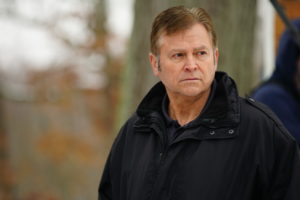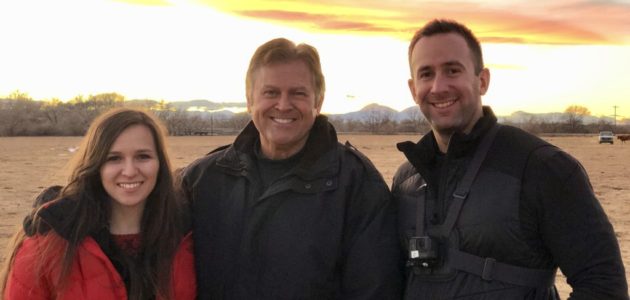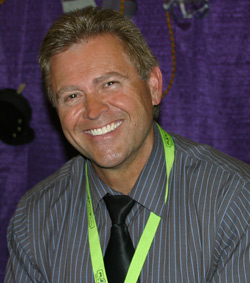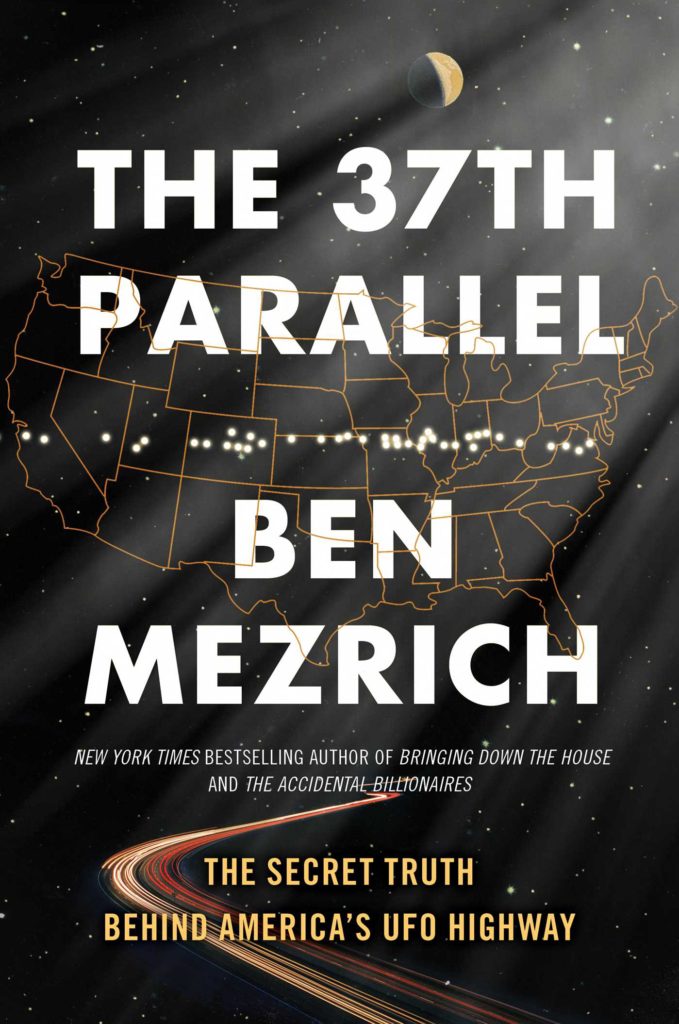The Sacred Sites of Ireland.
This past year 2022, my wife and I vacationed in Ireland. It took two years to get there due to COVID, but was well worth it. This is one place I’ve been wanting to visit for years. It has awesome landscapes, Irish Celtic traditions, food, fun and beer!
One of the must visits for me besides the Leprechaun museum in Dublin, was Boyne Valley. Boyne Valley has over 9000 years of history with structures that pre-date Stonehenge!
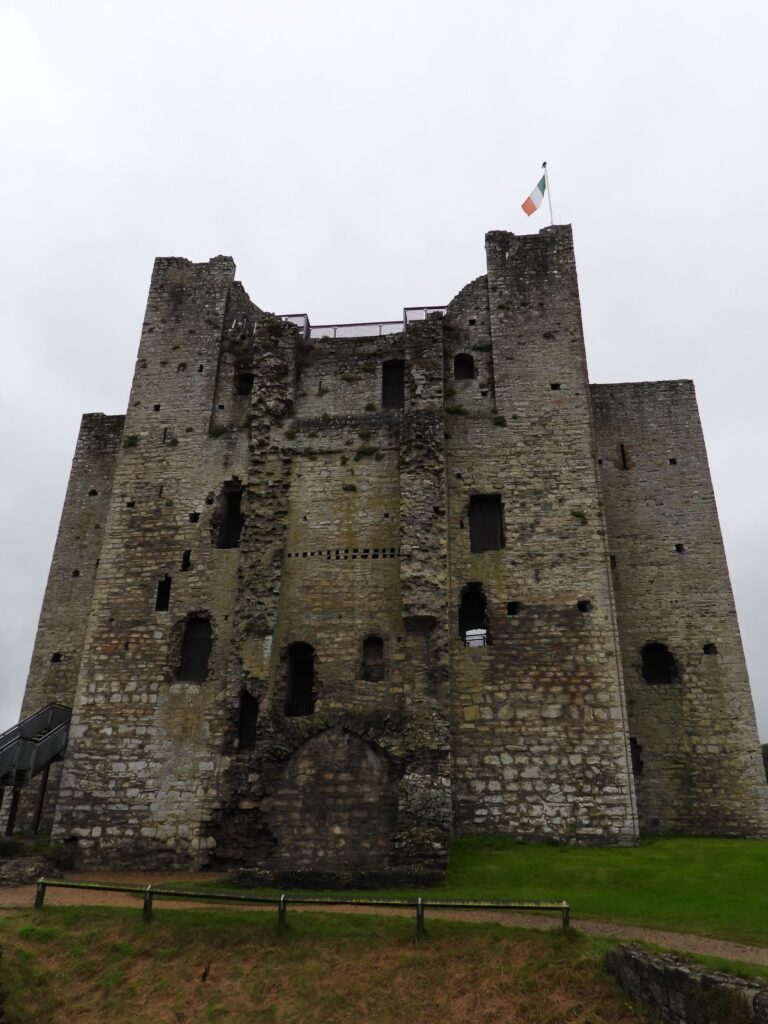
One of the places we visited was, “Trim Castle”. Built in 1172, this is the largest medieval Anglo-Norman fortification in Ireland, and it took over 30 years to build. The film, Braveheart was filmed in this castle and on its grounds.
This is one of Ireland’s listed castles with paranormal activity. Built in the 1100’s, this structure has been besieged and burned by rebel forces of the Gaelic High King of Ireland, “Ruaidri Ua Conchobair”. It was rebuilt one year after the battle in 1173. Many claim a lot of paranormal activity occur within its walls especially one apparition that is seen, a snow-white spirit that lays gold coins on a cloth for the poor before she disappears. This spirit appears to be a residual spirit not interacting with those who see it.
Another location we visited was the Loughcrew Cairns, also known as the Hills of the Witch. Local folklore says the site is the creation of the “Monster Woman” who once ruled the area. The witch or “Hags Hill” was an ancient hag known locally as An Cailleach Bheara. The hag could have been a Moon Goddess in Celtic origins that was a supernatural figure responsible for the landscape by placing large boulders in rivers and creating rock formations.
This site houses a group of Neolithic passage tombs in the County Meath which dates back to 3000 BC. Cairn T is one of the largest tombs in the complex. Inside it lies a cruciform chamber, a corbelled roof and some cool examples of Neolithic art. The Cairn is aligned to sunrise at the spring and autumn equinoxes.
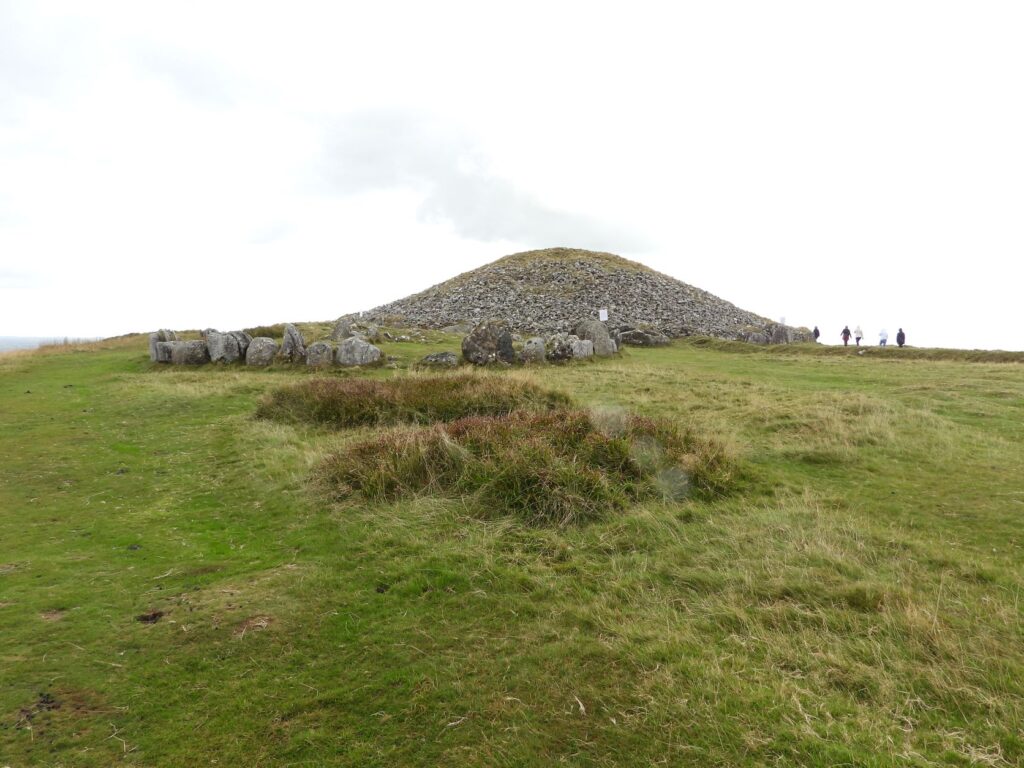
Loughcrew Cairn T on Carnbane East is well known for its Equinox Illumination at sunrise.
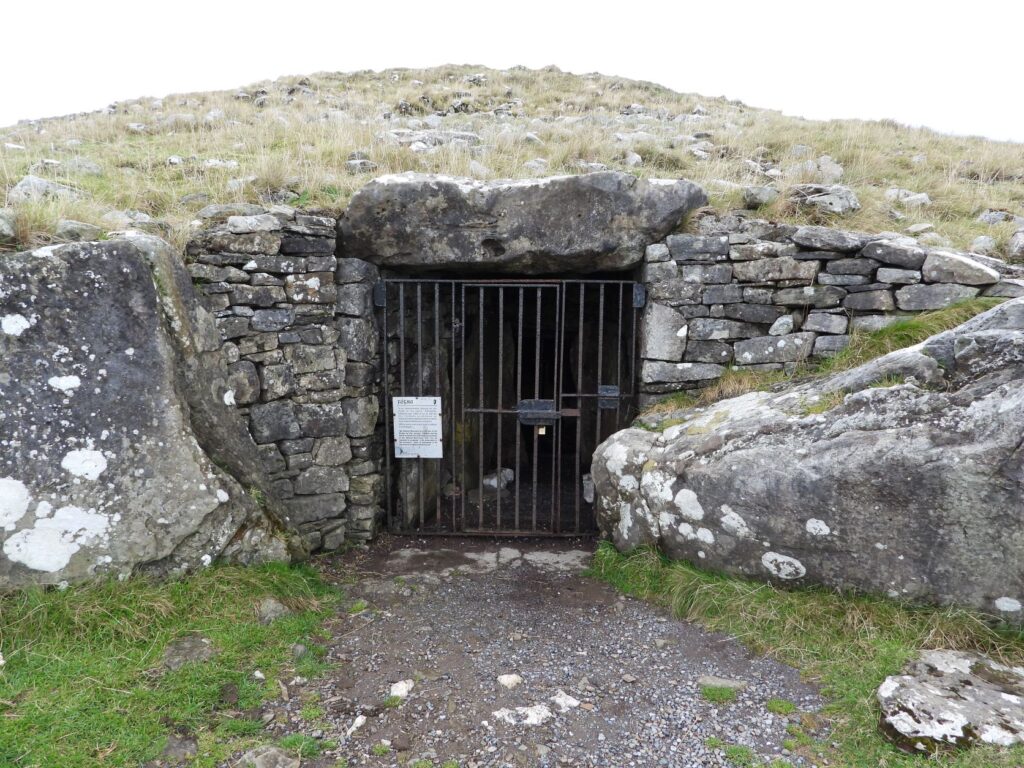
The passage and chamber entrance is closed off to the public to protect the tomb and its carvings.
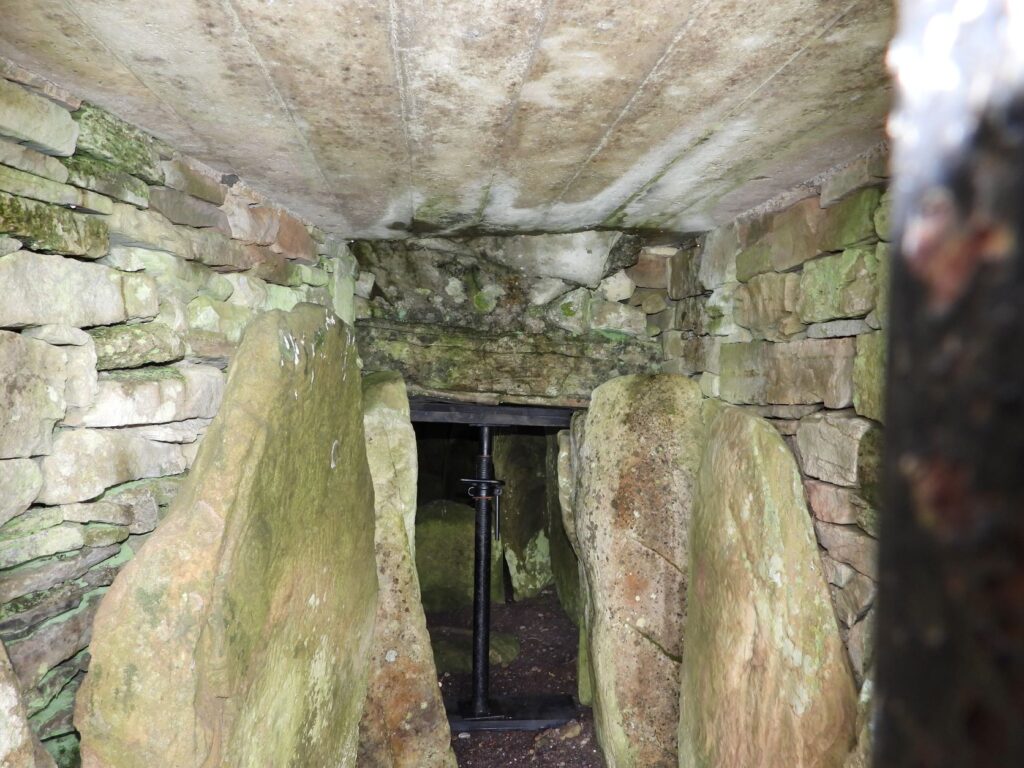
Using my camera I shot this image between the locked bars to get a better look of the tomb. Notice the brace protecting the backstone.
The rising sun on the mornings around the equinoxes (March and September) illuminate the passage and chamber. The backstone of the chamber which is engraved with sun symbols is flooded with a blaze of golden light during the fifty minute illumination.
The Vernal equinox happens around March 21st, day and night are of equal length marking the start of spring.
The Autumnal equinox happens around September 23rd, day and night are of equal length marking the start of autumn.
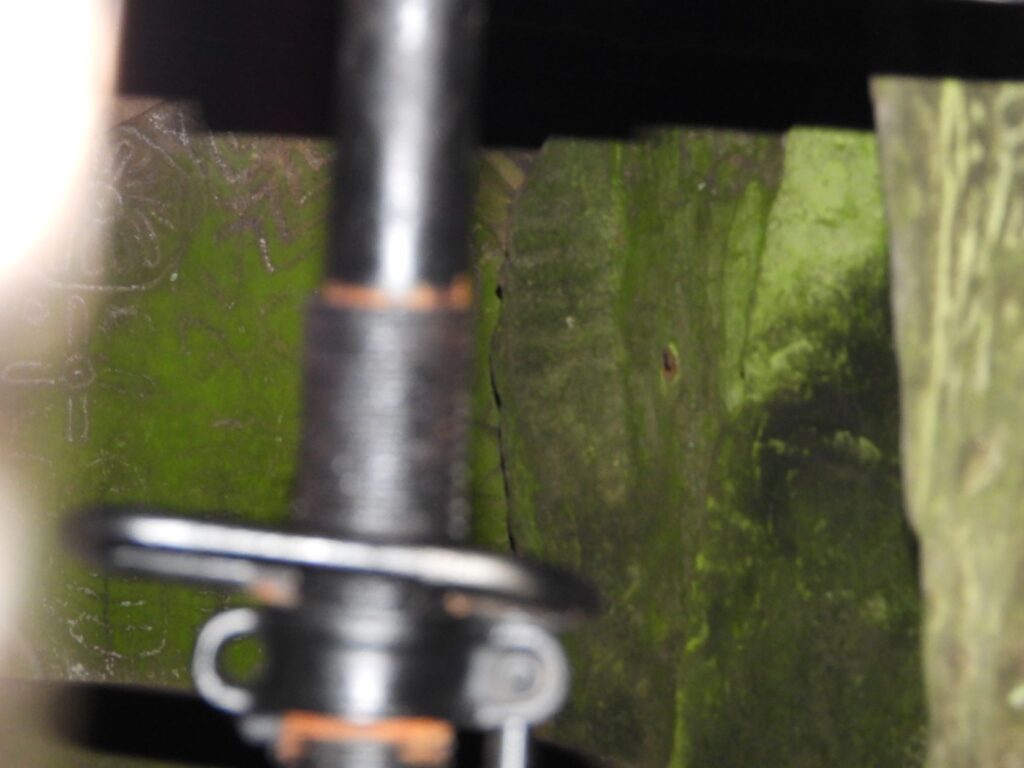
Using my camera zoom and flash, I was able to pick up some symbols from the equinox stone just to the left of the metal brace protecting the backstone.

There are several monuments surrounding the Cairn T, known as satellite monuments, which may have been an early form of a passage grave.
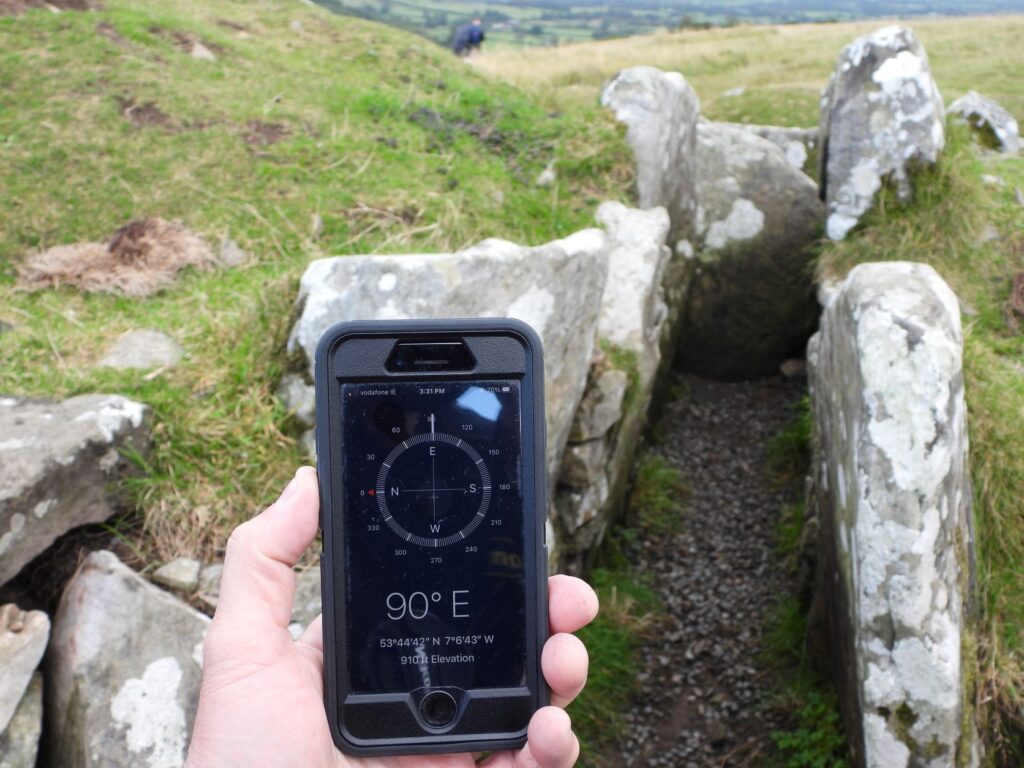
It is interesting that these passage graves also seem to follow the sunrise and sunset.
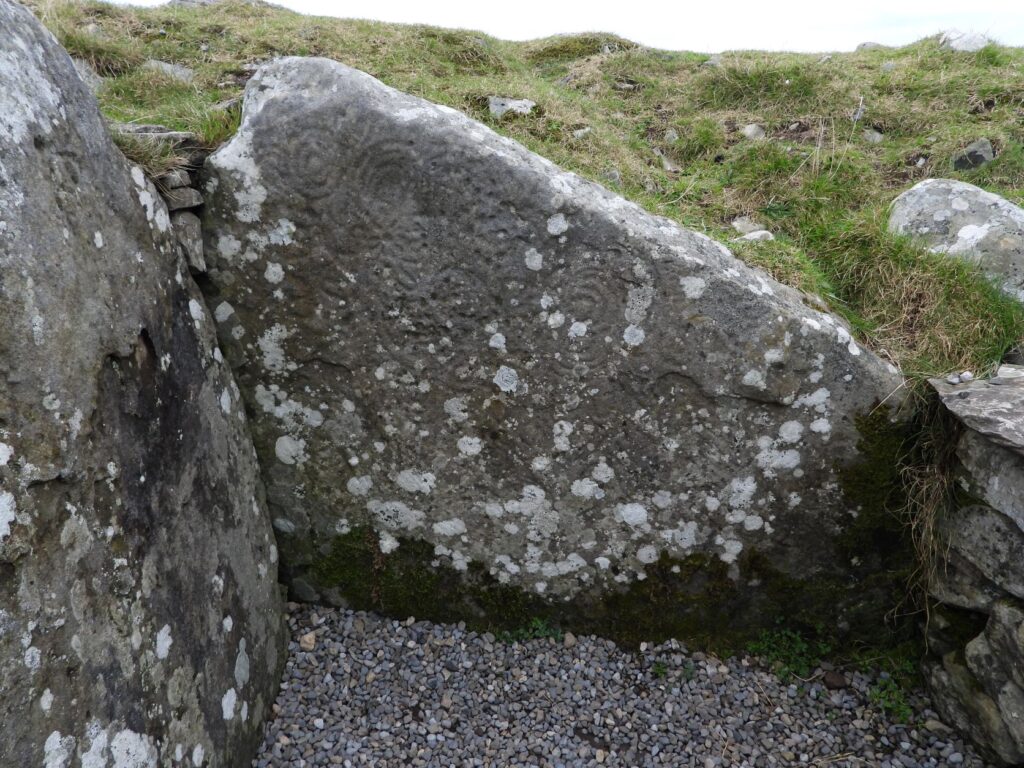
Within these passage graves are many markings. I found it interesting that the tour guides in Ireland referred to the markings as “rock art” when some of the symbols match exactly our Native American spiral symbols. The Native American spiral is the symbol for eternity or for the path of our existence on earth. That definition fits better for a passage grave rather than just rock art. Now one has to ask? Why do 5000 year old spiral symbols in Ireland match our Native American symbols? How are they connected?
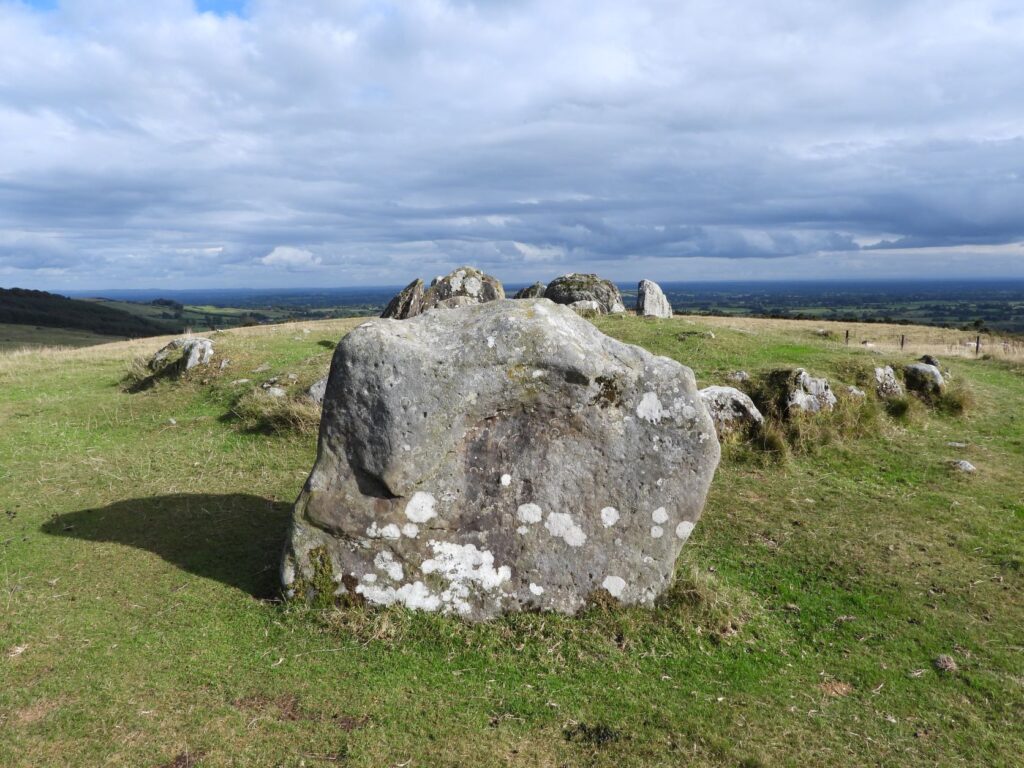
While visiting the Loughcrew Cairns, I met a lady who was stating this location was on a Ley Line, but I believe Ireland’s Boyne Valley may just be a combination of burial grounds and an astronomical calendar. An astronomical calendar would predict Vernal and Autumnal equinoxes.
Vernal equinox is a great time to start planting crops, which is the beginning of Spring.
The Autumnal equinox is a good time to finish harvesting crop and eat those foods that can’t be stored through the winter.
The Brú na Bóinne site in Ireland (not pictured) not only tracks equinoxes but also moon phases and stars too! It’s basically a celestial calendar. People thousands of years ago were very familiar with the movement of the moon and stars. Not only were their religious beliefs centered around this, but also their daily life. Planting, harvesting, knowing when the rainy seasons are, and knowing when winter hits, kept food on the table.
Because these people were so in-tuned to the night sky, they would also be aware if something changed, like a new bright light appearing.
The Native Americans here in the US who also watched the stars, recorded on rock art a supernova that was seen in 1054 and the light lasted until 1056. I wonder what the Native Americans thought when a bright new light entered their sky for two years?
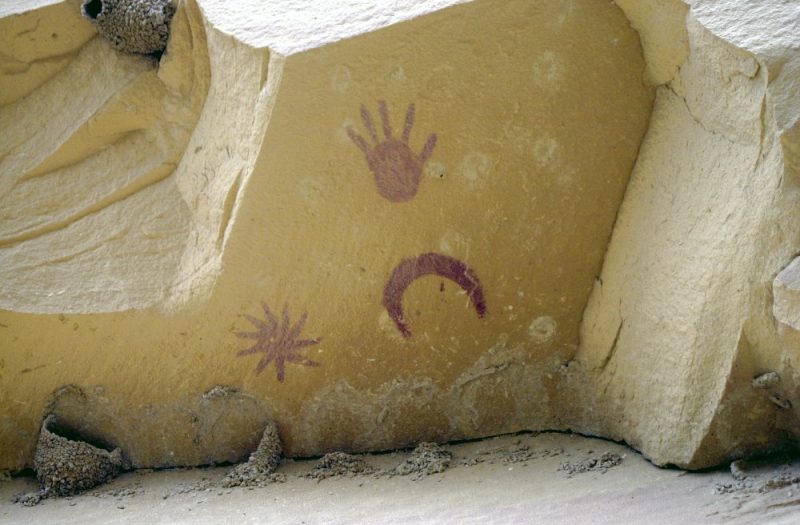
This image from (earthsky.org) is from Chaco Canyon, New Mexico, USA. It’s known as the Supernova Pictograph.
The 1054 Supernova explosion seen by our ancestors created the Crab Nebula. The six-light-year wide light explosion was a magnitude of 8.4 and located 6,500 light years from Earth in the constellation Taurus.
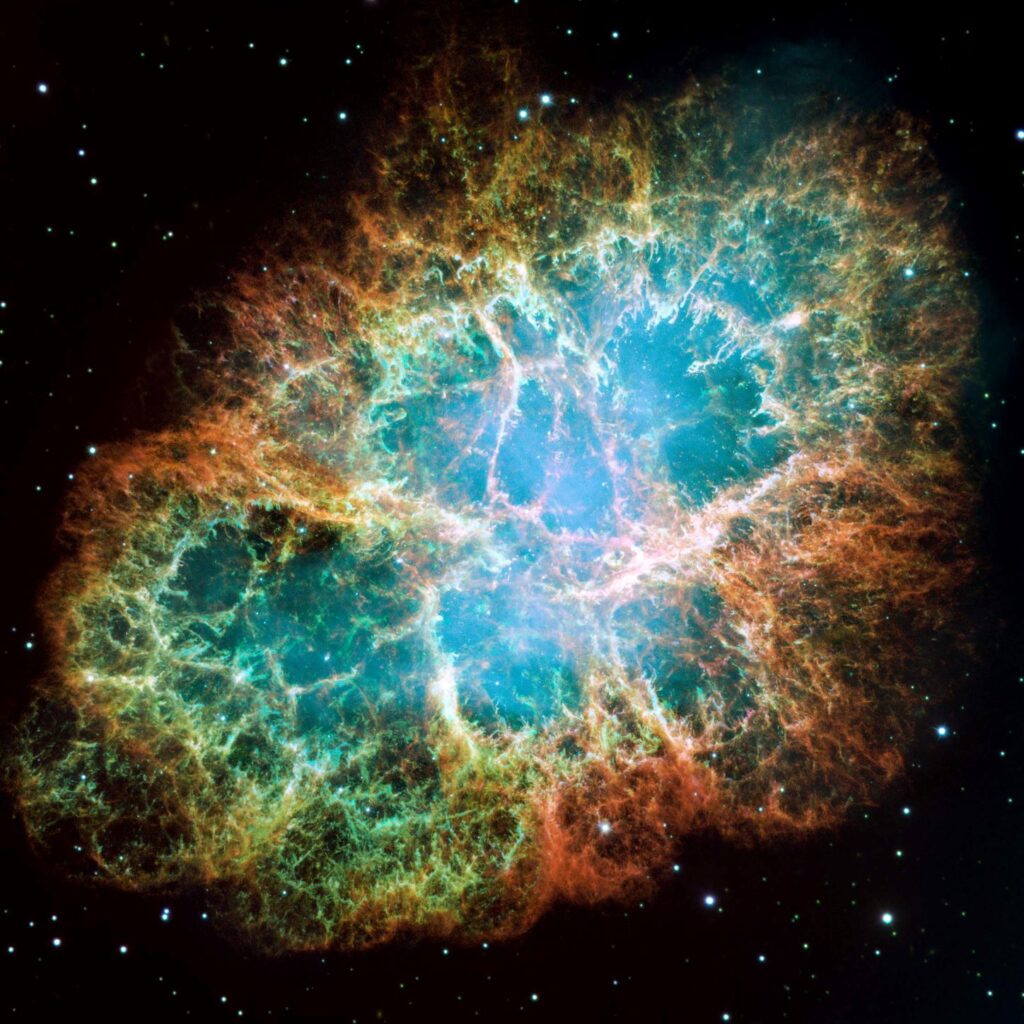
Note 1: Magnitude defined: Object’s luminosity, its distance, and the extinction reducing its brightness. The full moon has a magnitude of -12.6 and the Sun has a magnitude of -25.7. A higher positive number like the brightness of the Crab Nebula’s explosion of 8.4 means a fainter light. Just remember negative numbers means brighter like our Sun.
Note 2: Lightyear defined: This is the only measurement which is distance and speed. One lightyear traveling through interstellar space equals 186,000 miles per second. For those who are interested, 1 AU (Astronomical Unit) is basically 93 million miles or the average distance from our Sun to Earth.
So, not only did the Native North Americans see the Crab Nebula supernova, but there’s evidence astronomers in Japan and China saw it too! There appears to be no record of the supernova event in Ireland, but that may be due to longitude and latitude.
There are many sacred sites across this planet that monitor equinoxes and our night skies and some of these locations also held religious rituals and also include burial grounds for royalty. But do any of these sites include any paranormal activity?
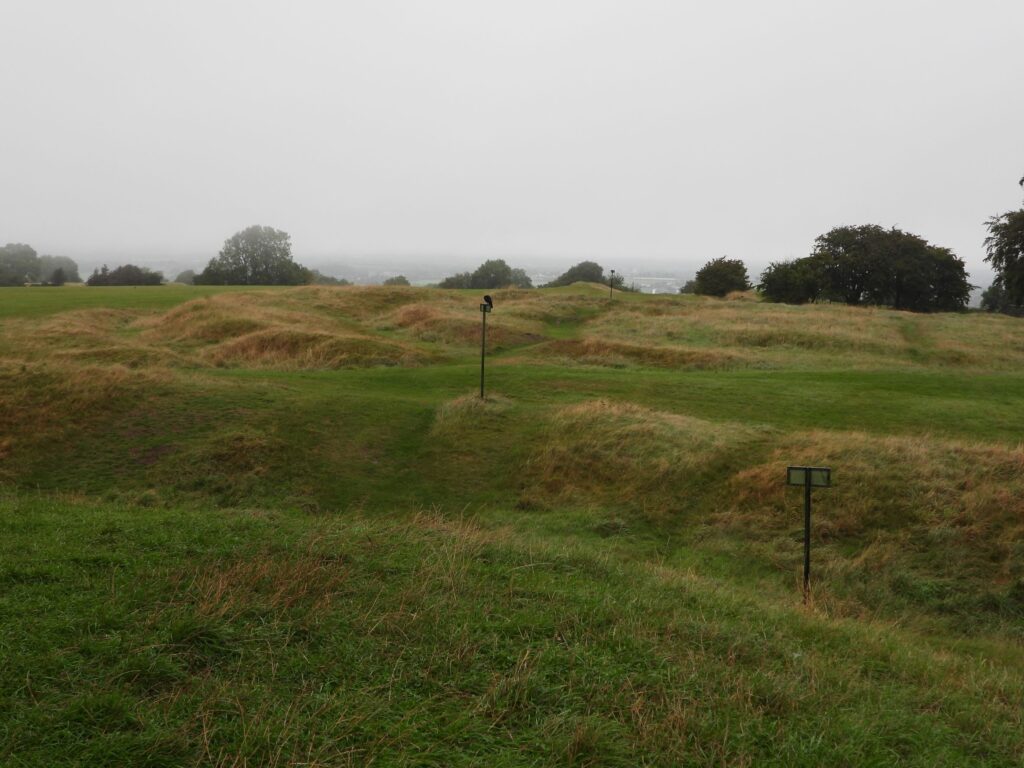
I spoke with a local Irishman at one of Irelands most sacred site, The Hill of Tara, which is a national protected monument.
What’s coolest about this location is, Halloween celebrations may have actually originated here. And as a big fan of Halloween, this was one place I had to visit.
The origin of celebrating Halloween started as a Pagan festival called Samhain, with traditions going back in the Boyne Valley 2000 years ago. Fires were ignited on two historic hills, Tlachtga and this hill, Tara. People attending the event wore colorful costumes to blend in with the roaming spirits and also to ward off any harmful spirits that might be near. The celebration included harvested food, drink and music.
The Hill of Tara site is:
– Ancient ceremonial and burial site.
– An inauguration place for the High Kings of Ireland.
– A Neolithic to Iron Age site.
– And the origins of Halloween!
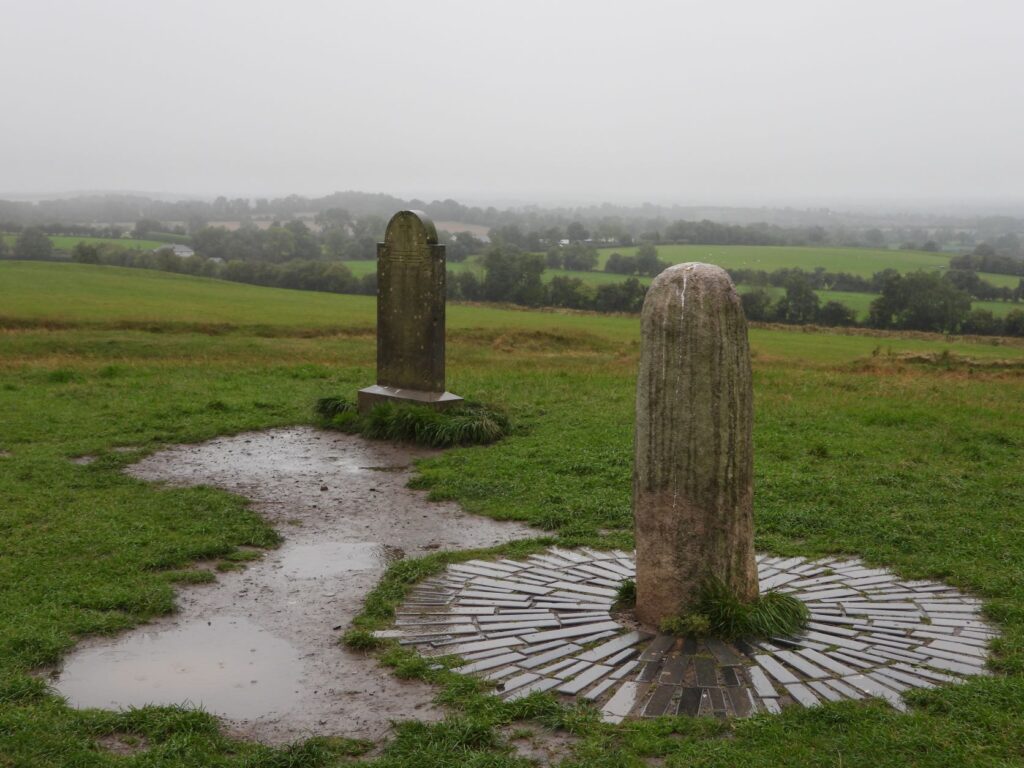
Excerpt from Heritage Ireland:
The Hill of Tara has been important since the late Stone Age, when a passage tomb was built there. However, the site became truly significant in the Iron Age (600 BC to 400 AD) and into the Early Christian Period when it rose to supreme prominence – as the seat of the high kings of Ireland. All old Irish roads lead to this critical site. St Patrick himself went there in the fifth century.
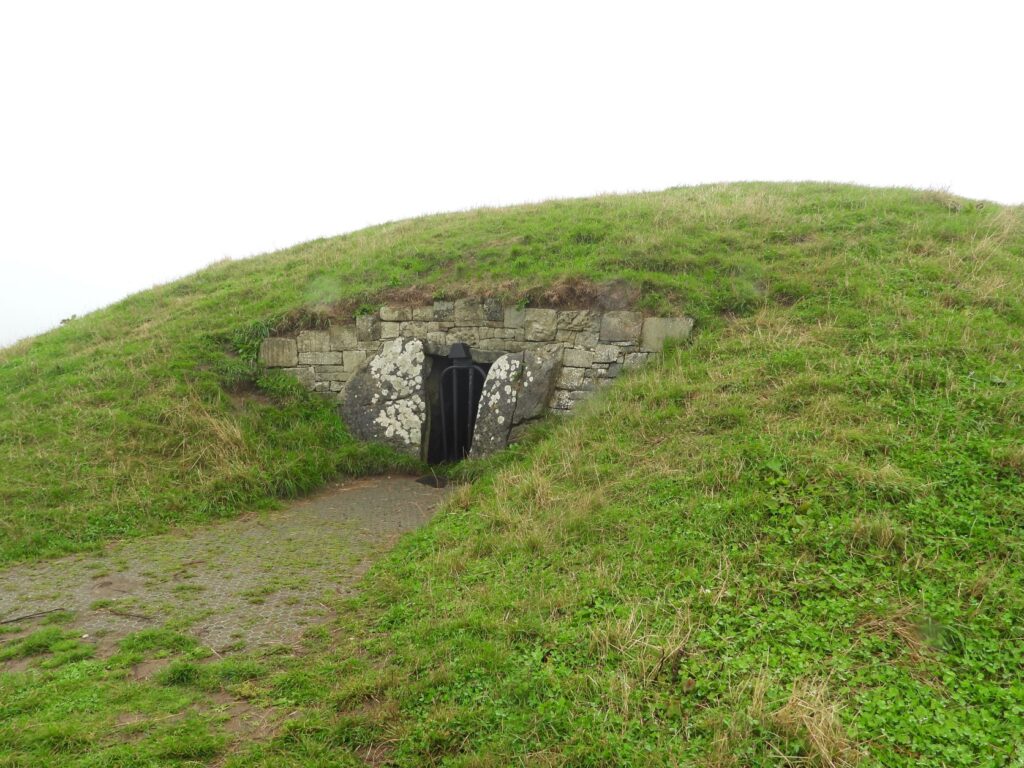
This picture of the Hill of Tara shows a passage way.
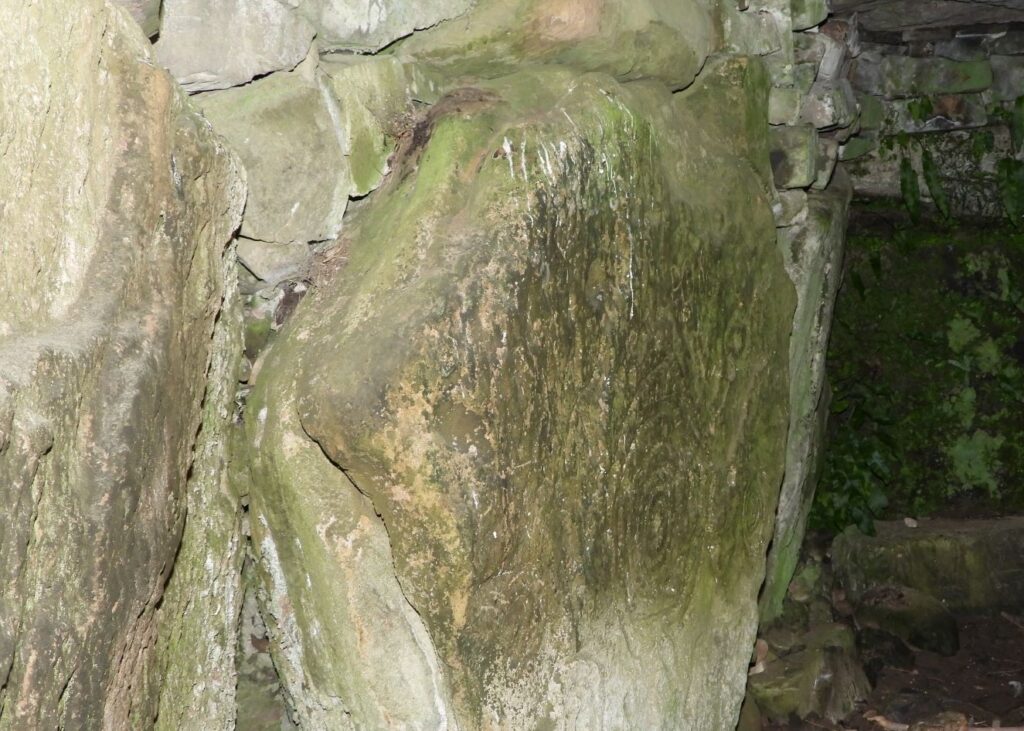
I shot pictures in between the metal gate bars to see the rock carvings. Once again spiral carvings show up.
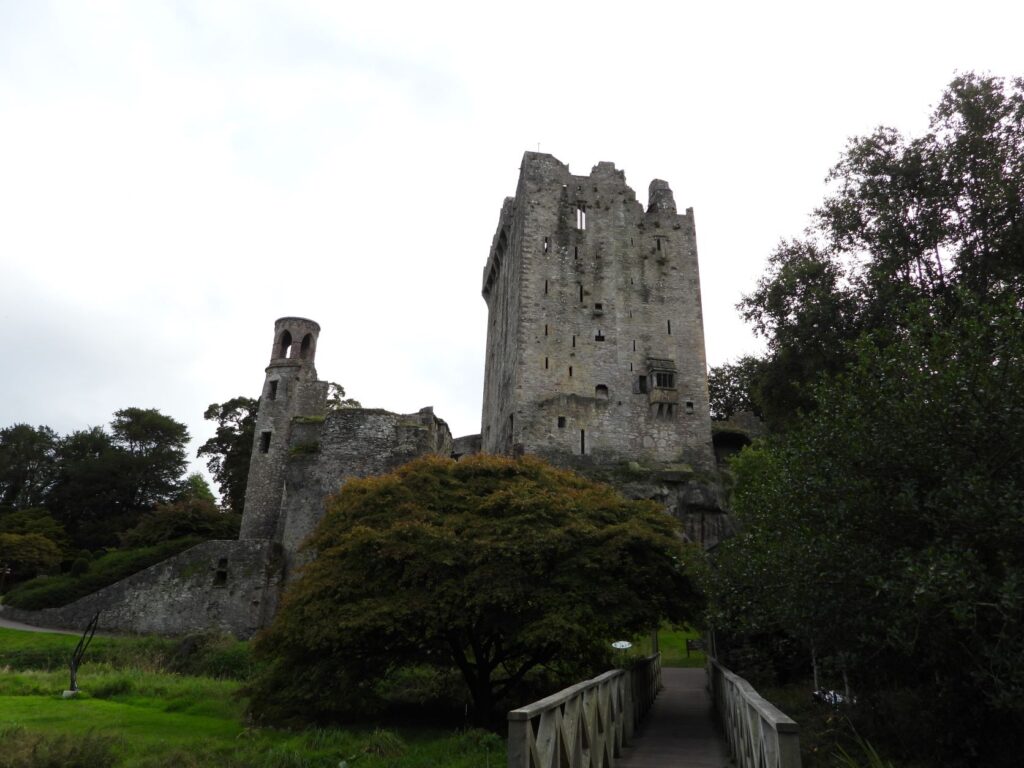
Another cool place to see in Ireland which is outside of Boyne Valley is, Blarney Castle. Originally built in 1200 as a wooden structure it was later fortified with stone but was then destroyed in 1446. Within that same year the castle was rebuilt and traded hands over the next few hundred years. The castle still has some underground labyrinth of tunnels now called, “Badger Caves.”
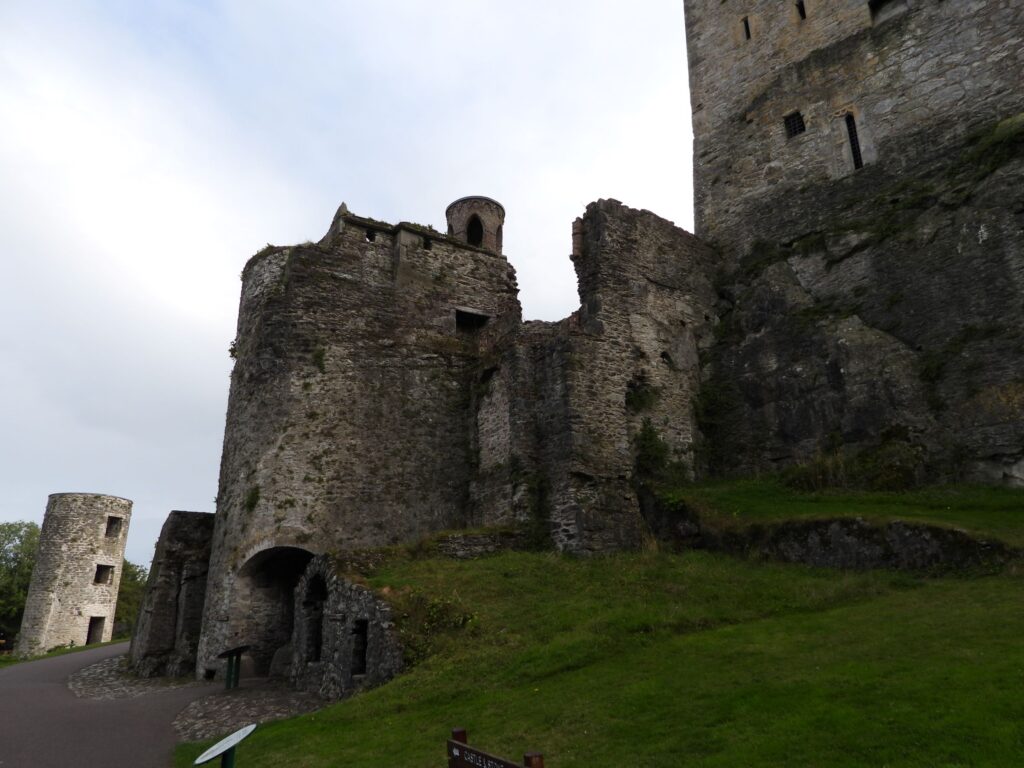
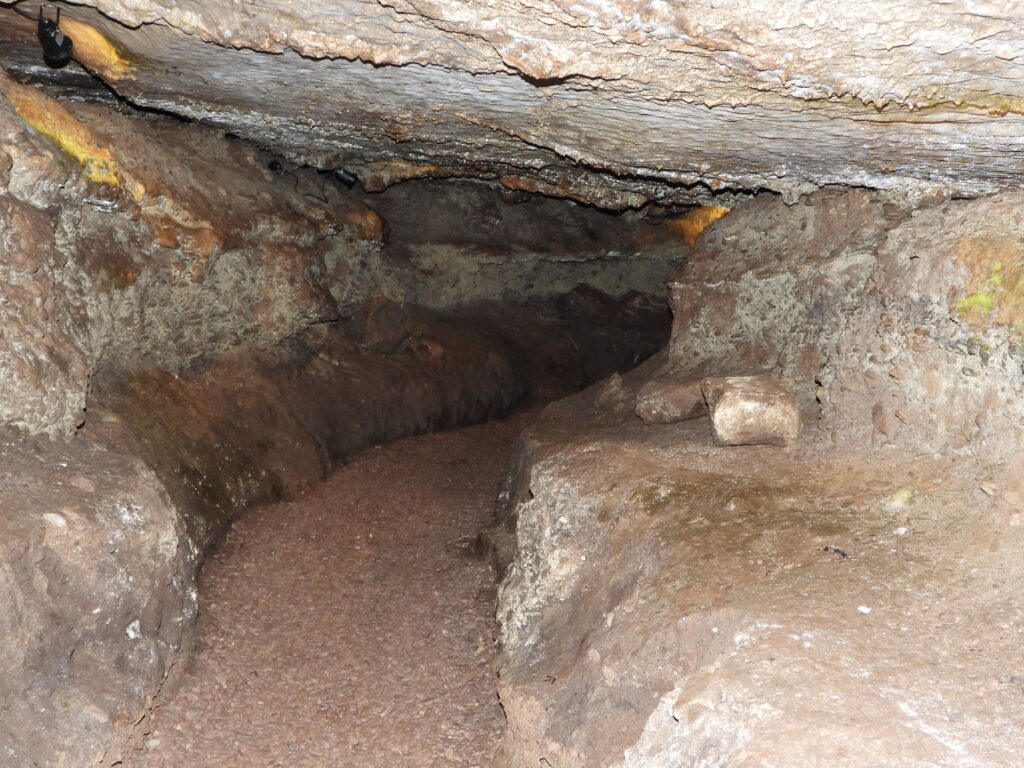
The tunnels were an escape route in 1646 when Lord Borghill captured the castle. While Lord Borghill was firing cannons at the castle, the castle’s occupants escaped through the tunnels leaving the castle empty. Some say these tunnels are haunted because it’s believed they also housed the castle’s dungeon and prison cells.
From time to time when visiting the castle, visitors hear footsteps and voices within the castle walls, and if that doesn’t spook you, how about ghost salmons seen jumping in the nearby Martin river.
Oh, there’s a curse too!
If you visit the castle and remove any part of it, a rock or a stone, misery and misfortune will come to whoever possesses it. Over the years the castle has acquired thousands of apologies from people who have taken things from the castle and its premises. People have lost their jobs, been involved in accidents and have became ill. So they mail the taken object back to the castle with an apology note.
Other legends of the castle include a witch. This witch is held prisoner during the daytime, but she seems to escape at night. She wanders into her kitchen where she makes a fire to stop shivering. Some say they have seen lights from dying embers of her fire. Others have also seen an enchanted herd of cows in a nearby pasture which often means, danger lies ahead.
Of course there’s also the Blarney Stone.
The Blarney Stone or Stone of Eloquence was placed in the castle by Cormac Teigh MacCarthy in 1446, and since then has become quite the tourist attraction. Story goes Queen Elizabeth had intentions of taking his castle so she sent the Earl of Leicester to claim the castle, the lands, and MacCarthy’s rights. MacCarthy wasn’t a very good speaker and was worried about speaking to the Earl. Just by chance, MacCarthy met an old woman who was said to be the Goddess Cliodhna. She instructed him to kiss this stone of Eloquence she had which would give him the skill of communication. After kissing the stone he met with the Earl and talked so sophisticatedly that the Earl had no other option than to disappoint the Queen by not taking his castle and land. After being able to keep his castle, MacCarthy moved the stone from the ground where the old woman kept it, to the top of his castle. He did this so everyone could share its powers.
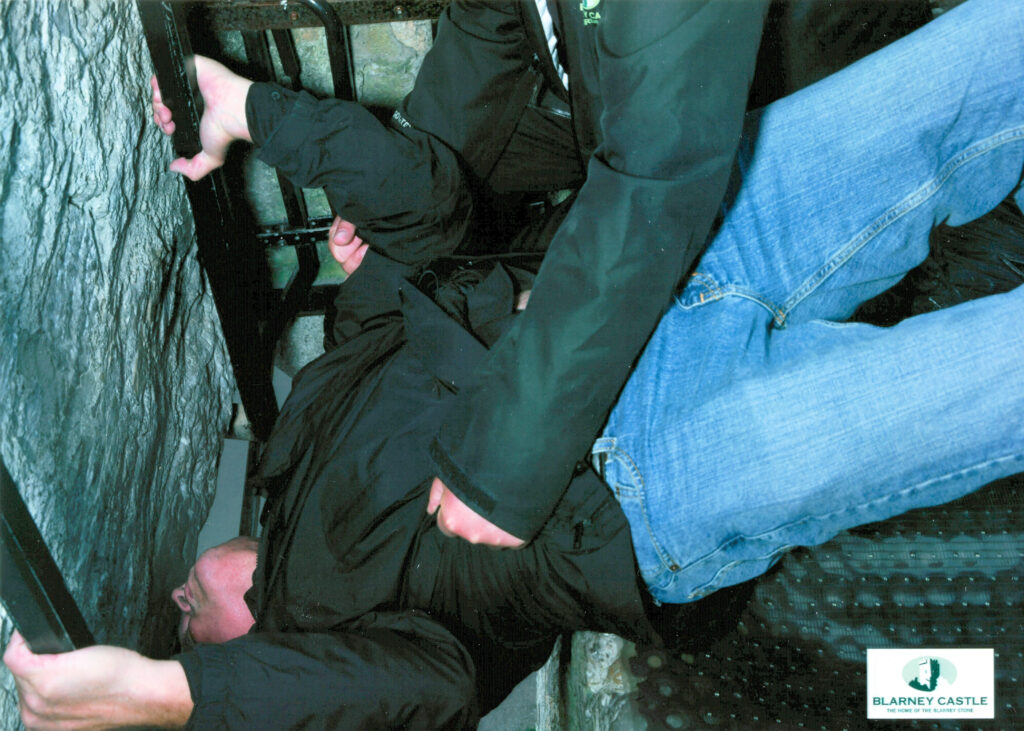
Today, whomever kisses the Blarney stone will be given the gift of great eloquence or skill at flattery. Basically the gift of gab. Since I already have the “gift of gab” just ask my wife, I decided not to actually kiss the stone but to pretend. Why? Because I didn’t want the gift of, “herpes”.
If you get a chance to visit Ireland, don’t forget to see “The Boyne Valley”, it’s Ireland’s most sacred and mythical area. Other areas of interest would be the Blarney Castle, Trinity College in Dublin which houses, The Book of Kells, the oldest book in the world written in 475, the Cliffs of Moher nestled on beautiful coastal scenery, the National Museum of Ireland – Archaeology which has cool Viking artifacts, and of course the Guinness Storehouse where after the tour you can, “kick back a cold one.”
Of course if you have some extra time, the Leprechaun museum in Dublin is always fun to visit. You may just get a chance to meet one of the locals there.
Information Links for post:
bandbireland.com: Hill of Tara
https://www.bandbireland.com/blog/b-b-ireland/2018/october-2018/spooky-sites-along-ireland-s-ancient-east
carrowkeel.com: Loughcrew Cairns megaliths.
http://www.carrowkeel.com/sites/loughcrew/cairnt.html
Heritageireland.ie Hill of Tara
https://heritageireland.ie/places-to-visit/hill-of-tara/
EarthSky: Chaco Canyon in New Mexico, and its astronomical rock art.
https://earthsky.org/human-world/chaco-canyon-nm-rock-art-supernova-pictograph/
NASA: Crab Nebula
https://www.nasa.gov/feature/goddard/2017/messier-1-the-crab-nebula
Category: The Z-Files





